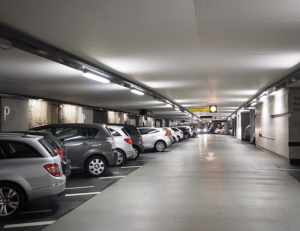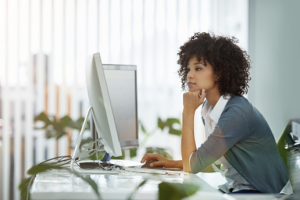We all know that too much sitting is bad for your health. Unfortunately many of us work in jobs where we are expected to be seated at our desks for the majority of the day, for hours on end (whether or not we’re being productive — but that’s another story!…)
Spending long hours sitting down during work can play a significant role in the development of chronic disease.
In fact, a growing body of evidence suggests that sitting in and of itself is an independent risk factor for poor health — even if you exercise regularly. Researchers have dubbed this phenomenon the ‘active couch potato effect’.
While a wee bit of additional physical activity is no replacement for regular pre- or post-workouts, it is a good idea to find small ways to make moving around a natural part of your work day.
Here are a few ideas:
1. Change up your commute

Perhaps you have a large car park at work. Park at the far end and walk. (N.B. Only try this if will be secure after work to get to your vehicle!)
If you take public transport every morning, get out a bit earlier and walk the rest of the way. Even a 10 minutes can go a long way.
If you’re up for it (and won’t be a hot sweaty mess when you get in!), try challenging yourself and going a bit further out each day.
2. Rearrange your work space
Ideally, you’ll want to stand up at least once every 10 minutes, or more, so simply moving one or more things you frequently reach for could allow you to build this kind of movement into your regular work day.Do you have a ‘lazy’ workspace? Making slight alterations to your individual work space can make a positive difference. Rather than having everything within easy reach, organize your office space in such a way that you have to stand up to reach oft-used files, the telephone, or your printer.
3. Take the stairs
If you are used to taking the elevator in your building, try using the stairs instead. If you can, make a friend on another floor, and challenge each other to visit each other only via stairs! Start to think of the elevator as a non-option.
4. Work standing up

Standing burns more calories than sitting does.
Look for ways to get out of your chair. Stand while talking on the phone. If your whole office can get on board, opt for standing-only office meetings.
This also discourages unnecessary discourse and make meetings more productive in less time.
If your employers will support it, you can also look into procuring a standing workstation for your use.
5. Take fitness breaks
Rather than hanging out in the lunchroom with coffee or a snack, take a brisk walk or do some gentle stretching. For example, face straight ahead, then lower your chin to your chest. Or, while standing, grab one of your ankles — or your pant leg — and bring it up toward your buttock. Hold each stretch for 15 to 30 seconds.
6. Don’t sit for your entire lunch hour

This isn’t the time for a hardcore workout where you’ll break a sweat (save that for the gym).
Walking at a moderate or slow pace is still more beneficial to your mind and body than sitting around for an hour. The change of scenery and the little bit of activity is a good way to break up the day.
Take half of the time to eat and use the other half to squeeze in a mini, but mild, workout. Go outside and take a short walk. You can also walk up and down the stairs in your building.
7. Split up your office errands
Now, we’re not promoting that you should waste time during your work day! But, if you have the time to spare, plan your work day so that you will be more active. If you have to deliver a file upstairs, instead of doing three or four other things while you’re at it, save these and tackle them one at a time during the day. Instead of going up and down the stairs once, you will do it twice or three times.
8. More face-time, less email
Rather than sending an email to your colleague (which in itself may take a while to craft!) why not get up and walk over to his or her office? Any excuse you can find to break away from your desk and move is a good way to stay active through your work day (just so long as it doesn’t impair you or your coworkers’ productivity).
9. Bring a fitness ball to work

If your employer won’t mind, consider trading your desk chair for a firmly inflated fitness or stability ball, as long as you’re able to safely balance on the ball.
You’ll improve your balance and tone your core muscles while sitting at your desk.
Use the fitness ball for wall squats or other exercises during the day.
Occasional bouncing can also help your body interact with gravity to a greater degree than sitting on a stationary chair.
10. Keep fitness gear at work
Always keep a sporty change of clothes (and a good pair of sneakers) at the office. You never know when someone may invite you for a walk or run after work… and if no one does, why not be the instigator?
You can also use a pedometer to help you assess how many steps you take throughout your work day; then simply make a concerted effort to continuously increase the number of steps you take daily. Remember with fitness than every bit counts. Just because you don’t do push ups or sprints during lunch doesn’t mean your body still isn’t benefitting from the movement.
You can also keep resistance bands — stretchy cords or tubes that offer weight-like resistance when you pull on them — or small hand weights in a desk drawer or cabinet. Do arm curls between meetings or tasks.

